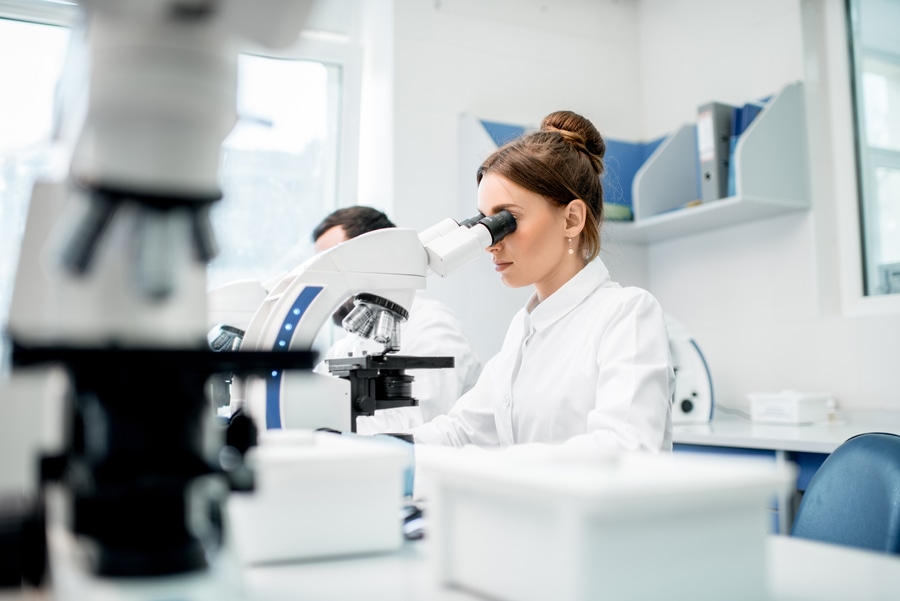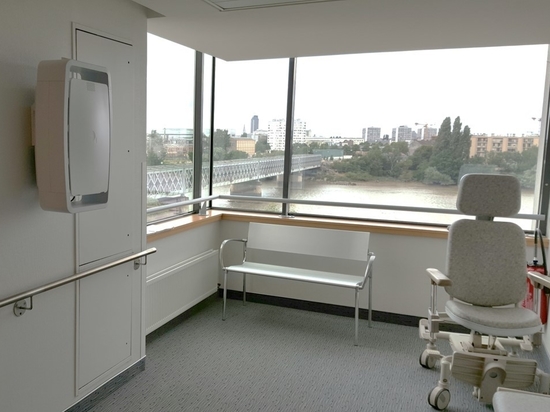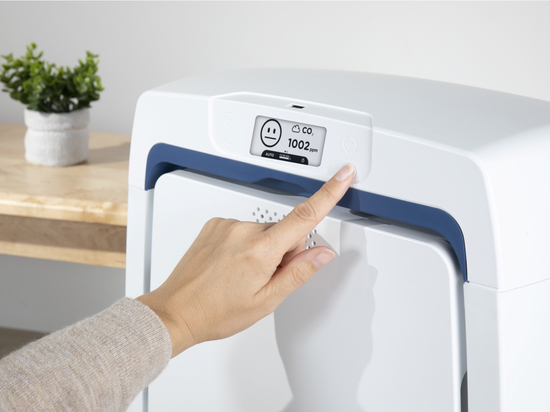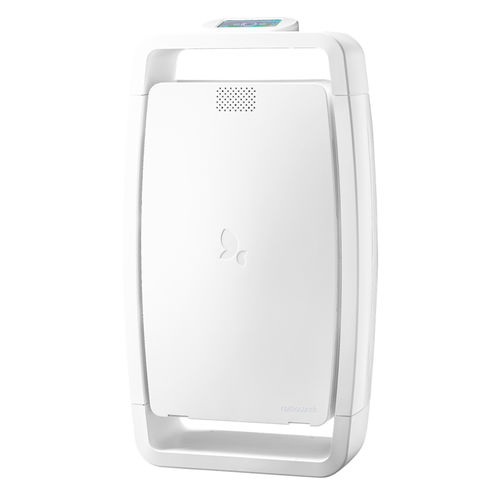
#Industry News
Reducing the risk of airborne contamination in laboratories: prevention and effective solutions
Fighting air pollution in laboratories: an innovative solution for a safe and efficient environment
Laboratories, whether specialised in analysis, research, or quality control, play an essential role in various sectors, such as healthcare, agri-food, biotechnology, and industry. As a space dedicated to scientific rigour, they must ensure optimal safety for their employees and maintain the reliability of the results obtained. However, these environments are exposed to many pollution risks, particularly airborne contamination. Such pollution affects not only the health of the personnel, but also the accuracy of experiments, potentially leading to significant economic disruptions.
Dangers for laboratory personnel
Laboratory personnel are daily exposed to various risks, with airborne biological contamination being central. Invisible microorganisms, such as bacteria, viruses, and fungal spores, can disperse in the air and enter the respiratory system of technicians, maintenance personnel, management teams, and even visitors. Contamination occurs during the handling of samples, especially in laboratories working with pathogens like Mycobacterium tuberculosis, transmitted via aerosols produced during procedures.
While medical analysis laboratories are at the forefront, biological dangers also exist in quality control laboratories for the agri-food, biotechnology, and industrial sectors. These labs often detect various microorganisms, viruses, bacteria, or moulds that can spread through the air, posing significant dangers without appropriate measures.
Without proper personal protective equipment (PPE) or a high-performance ventilation system, biological contaminants can quickly spread through inhalation, penetrating the body. Regular tasks such as sample handling or opening containers can expose workers to airborne pathogens, increasing health risks.
Chemical exposure: an underestimated risk
In addition to biological risks, laboratories often use hazardous chemicals. Volatile organic solvents, such as methanol, acetone, and benzene, are commonly used in various procedures, especially for compound extraction and cleaning equipment. These chemicals are necessary but can pose significant dangers if not handled under optimal safety conditions.
For instance, methanol is often used in organic compound extraction, but even small amounts can cause severe adverse effects if inhaled. Ensuring adequate ventilation in the workplace is essential. Similarly, acetone, commonly used to clean laboratory glassware, poses a similar risk. Its flammable and toxic nature requires consistent use of fume hoods, protective masks, and gloves to avoid dangerous exposure.
Additionally, disinfectants such as bleach and hydrogen peroxide can irritate the respiratory system and skin. These substances, essential for maintaining a sterile work environment, must be handled with care, following strict safety protocols, including proper ventilation management.
Economic impact of airborne pollution
Airborne contamination in laboratories not only poses a health risk but can also disrupt operations, directly affecting the laboratory’s economic performance. Undetected biological contamination can distort experimental results, leading to costly reanalysis and production delays.
For example, in biotechnology laboratories, microbial contamination can compromise cell culture, affecting costly and complex results. This leads to wasted time, resources, and reduced laboratory reliability. In agri-food quality control labs, air pollution can falsify compliance tests, causing significant delays in the production chain with direct economic consequences.
Furthermore, frequent or mass employee absenteeism due to pollution-related infections increases operating costs and reduces team productivity. Even a simple flu outbreak in the laboratory can trigger a wave of sick leaves, reducing staff numbers and delaying project deadlines.
Solutions for better air quality control in laboratories
To minimise these risks, implementing advanced ventilation and air purification solutions is crucial. Among the most innovative technologies, EOLIS Air Manager stands out as the most advanced solution. Designed to meet the strictest standards in medical and scientific environments, this air purifier features an ultra-efficient filtration system that provides optimal protection against airborne contamination.
The EOLIS Air Manager filtration system operates through 5 key steps, each playing a vital role in air purification:
ISO 18184-certified biocidal pre-filter, eliminating microorganisms from the air at the first stage.
Activated carbon filter, designed to absorb volatile organic compounds (VOCs) and neutralise chemical odours.
H13 HEPA filter, capable of capturing 99.97% of particles, including viruses and bacteria, essential for laboratories handling pathogens.
UV-C bactericidal technology to destroy microorganisms at the molecular level, offering enhanced protection in labs dealing with infectious samples.
Optional active oxygen generation, which allows for rapid surface and air disinfection, ensuring quick re-occupancy of the workspace.
Thanks to these technologies, the plug-and-play EOLIS air manager ensures impeccable air quality, meeting laboratory needs while minimising pollution risks.
Conclusion
Managing atmospheric pollution in laboratories is both a public health and economic performance issue. Laboratories specialising in medical analysis, research, or quality control must implement robust preventive measures to ensure the safety of personnel and the reliability of results. By investing in innovative devices such as the EOLIS Air Manager, laboratories can reduce pollution risks, increase productivity, and reinforce the trust of partners and clients.






